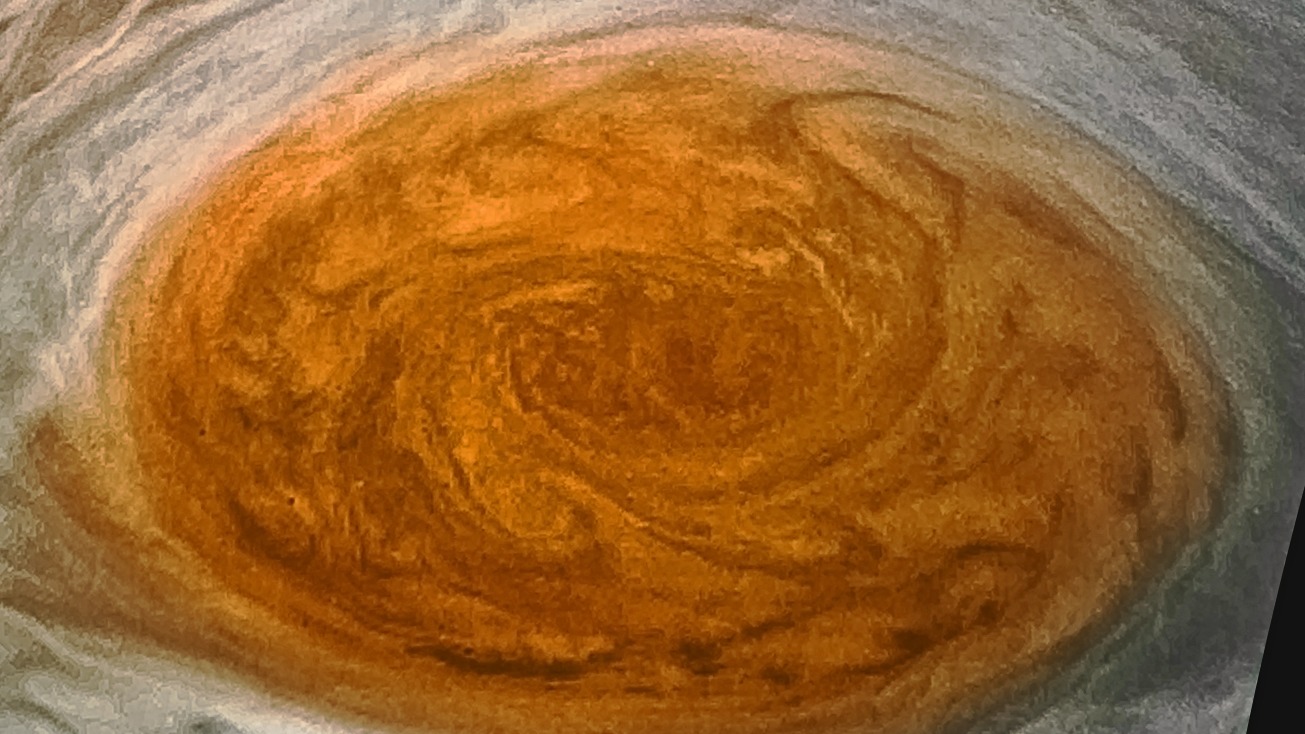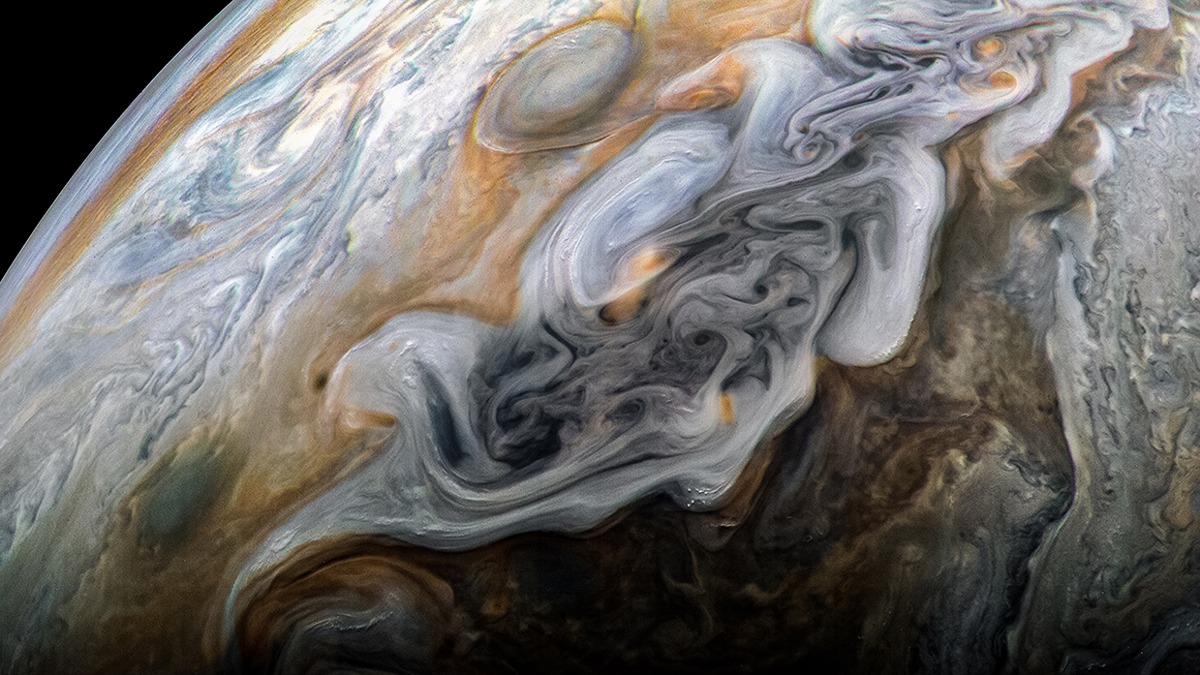Jupiter scientists need your help hunting for storms in stunning photos
Jovian Vortex Hunter launched to pore through data collected by NASA's Juno spacecraft.

With a massive planet come massive storms.
Such storms on Jupiter are the focus of a new citizen science project hosted on Zooniverse. Jovian Vortex Hunter launched Tuesday (June 21) to allow anyone around the world to help scientists search for storms on the largest planet of our solar system.
The project, which pores through data from NASA's Juno spacecraft, is "aimed at studying the different types of clouds that form on Jupiter, in order to better understand how the atmosphere of the largest planet in solar system works," Ramanakumar Sankar, the lead of the project and a postdoctoral researcher at the University of Minnesota, wrote in a blog post.
Related: Juno snaps stunning photos of crescent Jupiter and Ganymede
Juno has been operating at the huge planet for nearly six years (it arrived on July 4, 2016). Already, its JunoCam project allows citizen scientists to enhance raw imagery from the spacecraft.
The new project will focus on vortices that form in the clouds of Jupiter, which puzzle scientists with many questions about their formation and evolution, Sankar wrote.
"There is very little we know about why the clouds in vortices have so many colors — is it due to the atmospheric composition? Or are the clouds forming at different altitudes, where the pressure and temperature affect the crystalline structure, resulting a different color?"
Breaking space news, the latest updates on rocket launches, skywatching events and more!
The researchers are hoping to tackle these topics by asking project participants to catalog where vortices are forming, which helps the physicists figure out their origin story.
The project plans to generate a catalog of different types of vortices, and to "match them with the underlying physics/chemistry of the location that they form in," Sankar wrote.
"With your help," he added, "we could learn so much about the Jovian atmosphere and processes that form the amazing clouds that we see."
Follow Elizabeth Howell on Twitter @howellspace. Follow us on Twitter @Spacedotcom and on Facebook.

Elizabeth Howell (she/her), Ph.D., was a staff writer in the spaceflight channel between 2022 and 2024 specializing in Canadian space news. She was contributing writer for Space.com for 10 years from 2012 to 2024. Elizabeth's reporting includes multiple exclusives with the White House, leading world coverage about a lost-and-found space tomato on the International Space Station, witnessing five human spaceflight launches on two continents, flying parabolic, working inside a spacesuit, and participating in a simulated Mars mission. Her latest book, "Why Am I Taller?" (ECW Press, 2022) is co-written with astronaut Dave Williams.

